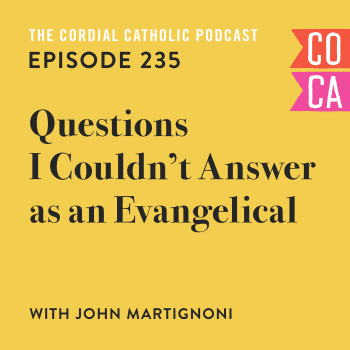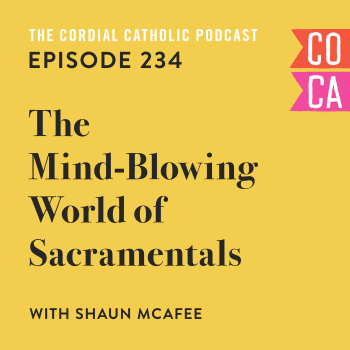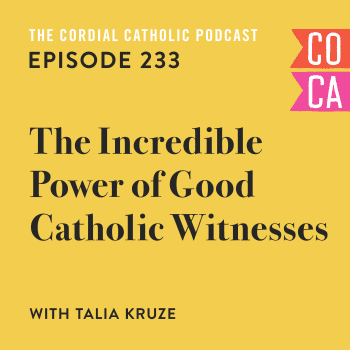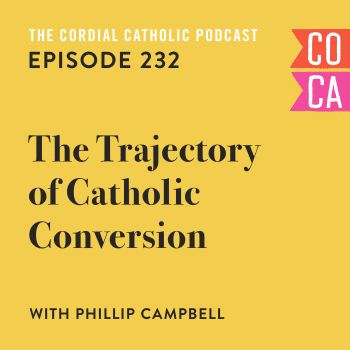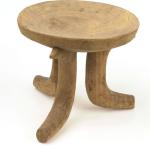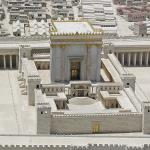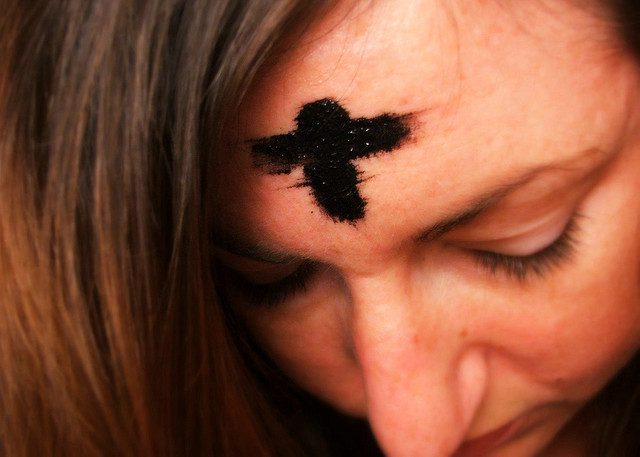
This year my Lenten experience is going to be weird.
At Easter, baring supernatural intervention, I’ll be joining the Catholic Church.
That means this is my last Lent as a Protestant. My final forty days.
For myself, if no one else, I need to stop right here and let that sink in.
Lent, Lent, as a Protestant
For the last several years, Lent has been a more or less important devotional season. Our non-denominational church, as I’ve written before, is very conscious and respectful of many traditional Christian practices and Lent is one of them. Like at Advent, when we light a candle on the Advent Wreath each Sunday, Lent is observed with a similar respect and piety although in a way that’s slightly truncated, and, being stripped out of its liturgical framework, not nearly as rich.
Nonetheless, I’ve done Lent before, and I’ve done it pretty well. Usually I give up candy or snacks and make it the whole way. Once my wife and I gave up both dairy and gluten. I lost 10 pounds, remarkably, but we didn’t plan very well enough in advance and ended up starving most of the time. If I recall correctly we didn’t quite make it through the full Lenten fast.
Still, it’s been important to me, in varying degrees.
Someone the other day asked me, as I turn down the home stretch towards my conversion to the Catholic Church, what makes Lent, for Catholics, different than what we’d practiced before. Coming from a non-denominational background, well, there’s a lot. And a lot of what makes Lent different in a Catholic Church is what makes worship different in a Catholic Church and is also the same thing that makes the Catholic Church so appealing to me. It’s the richness.
Lent is richer in the Catholic Church because so much changes.
What’s So Great About Catholic Lent?
First of all, it’s the liturgical season of Lent. In our non-denominational church, for better or for worse, our beloved pastor doesn’t change his clothes specifically for Lent. Don’t get me wrong, he changes his clothes but he doesn’t get garbed up in specific duds for the Lenten season. Despite following the Lectionary we aren’t liturgical in that sense. In the Catholic Church, however, the priest—all priests, everywhere, and even the Pope—dress differently. Their vestments say, “Folks, it’s Lent. Reeeeepent!” In soothing purple, mind you.
And then there’s the liturgy itself, which changes. To underscore the penitential tone of the season—a time of preparation for Easter—parts of what usually make up the regular liturgy are removed, omitted, and their presence is a stark reminder of the purpose of the season of Lent. Additionally, flowers, in large part, are usually removed from the church and on the fifth Sunday of Lent crosses in lots of Catholic Churches will be symbolically covered up.
And Catholics fast. On Ash Wednesday it’s one meal (and two smaller snacks). On Fridays during Lent it’s no meat. These are not fasts of incredible piety to increase ones holiness or chance at salvation. These are physical, penitential actions to remind us of the coming of Easter and the importance of the work of Jesus on the cross. These are tangible feats that remind us of our own humanity, our brokenness, our spiritual hunger, and our dependence on God who gave His people manna to eat in the desert—and Jesus to eat in the Lord’s Supper.
Lent is a rich experience in the Catholic Church because of the rich symbolism and because of the rich communal experience. The liturgy, the readings, the symbolism, and the fasts communally link the vast global Catholic Church together and underscore the importance of the season. These things all work together. The fasts, the readings, the symbolism—any of these things taken by themselves lose so much of their meaning. This year, for the very first time, I’m finding them all in tandem, and in unity, in the Roman Catholic Church.
My Last Lent as a Protestant
And this is my last Lent as a Protestant.
At Easter I’ll join the Catholic Church.
This journey, which stretches out over nearly a decade, seems to have crescendoed so suddenly, and so incredibly.
And so quickly.
When I started writing, in earnest, four months ago about my journey I could’ve hardly imagined being at this point and here we are. Here I am. On the cusp of Lent, which counts down to my entering into the Catholic Church. Tonight, at R.C.I.A., we practiced for the Rite of Election which will take place on Sunday morning. A Rite which says to us, our sponsors, and the whole Church community that God chose us long before we chose him. That God called us down this path long before we ever realized.
That’s pretty poetic. I like it. And I really couldn’t have imagined.
I’d say, “How long ago did God know about this—my wild conversion to the Catholic Church?” But, of course, He knew from forever. He knew when he first knit me together, no? He knew when I first heard the voice of a podcasting priest from the Netherlands that this would be a kind of awakening. He knew way back when I had that fateful conversation with a Protestant pastor who asked me, “Who put the Bible together?” That those words would forever change my life. He knew from when I read the very first words of Rome Sweet Home by Scott and Kimberly Hahn that it would be the beginning of the end.
These, my final forty days as a Protestant, will certainly be momentous, and unique. They’ll be shaded a particular colour—maybe purple will do best.
Lent, and the Fullness of the Catholic Church
As I think back on my journey—and I’m far, far from being done writing about it—I think about what led me here and what’s convinced me so deeply. Someone the other day asked, “Why Catholicism?” And my coy answer should be, “Read my blog!” But I’m supposed to be cordial, right? So I say, “Jesus.” And it’s true, although also coy, I suppose!
Jesus.
In the fullness of the Catholic Church.
And I mean it like this…
I mean it in that the Catholic Church claims Jesus, embodied in the Eucharist. Really there. And it isn’t magic; it’s a miracle taken right from His very words in Scripture.
I mean it in that the Catholic Church claims Jesus as their founder. Not the founder of the Christian movement, or the spiritual, non-physical Christian Church of believers, but as an actual physical institution with bishops, priests, and deacons as cogs in the machine. With a Pope. And when I read the New Testament, and the Early Church Fathers, I find this to be right there, too.
And the Catholic Church claims Jesus, or rather the Holy Spirit, which is one and the same, as a great protector and aid.
I mean that the Catholic Church, alone, claims to have the keys to bind and loose. Something that, again, I find clearly in the Scriptures. The Catholic Church claims to have that ability, through the apostolic succession it enjoys historically, and through the authority given to it by Christ, to define moral teaching and doctrine, to interpret Jesus’s words and the tradition passed down to us by the apostles, and to, on behalf of Jesus, forgive our sins and baptize His people.
Jesus is there—in a way I find him nowhere else. In a way that no one else claims to have Him.
A Countdown to Catholicism
So, yeah, it’s a weird Lenten season for me. Because on one hand, it’s my final forty days as a Protestant. The final leg of a long, spirit-led journey. A putting on of something new. And on the other hand, it’s a season of penitence, or repenting and preparing for the incredible celebration of Easter. And, if you’ll indulge me here, dear reader, on the other hand it’s one of the most exciting times in my life. It’s the countdown to Catholicism. The countdown to being in full communion with the Church and being able to fully participate in the Catholic life. That is an incredible gift underscoring the approach of Easter. But it’s also a time of great penitence, see?
A time of, “Lord, how am I worthy to be called to the Catholic Church? How did You orchestrate this? How did we get here?” And, “Thank you, thank you, thank you.”
Like we say at every single Mass before we approach the Eucharist, it’s forty days of repeating a refrain like, “Lord, I’m not worthy that you should enter under my roof, but only say the word and my soul shall be healed.”
I’m not worthy but I am awestruck that, somehow, I am accepted anyway.
Oh, and before you write in, I know technically Lent is more than forty days. But you take my point, right?
I hope so!
Stay in touch! Like The Cordial Catholic on Facebook:








